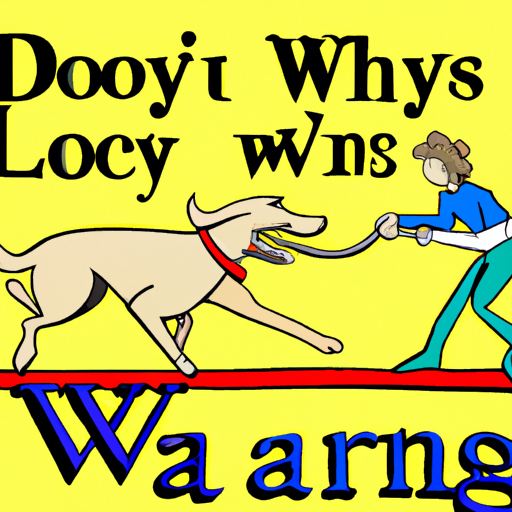Do you ever wonder why your furry friend can’t resist a good game of tug-of-war? It’s an age-old question that many dog owners find themselves asking.
1. The History of Tug of War in Canines
Dogs have been engaging in tug-of-war games for centuries. You can trace this game back to the wild, where it was a vital part of survival. Wild dogs would pull and tug at prey to tear it apart and share it within the pack. This instinctive behavior has carried over into our domesticated dogs, making tug of war a favorite for many.
- It helps to strengthen their jaw and neck muscles
- It mimics the thrill of capturing and tearing prey
- It’s a way to engage and bond with their pack (or in this case, their human family)
2. The Mental and Physical Benefits of Tug of War
Playing tug of war isn’t just fun for your dog; it also provides essential mental and physical benefits. Here’s a table to demonstrate some of these benefits:
| Mental Benefits | Physical Benefits |
|---|---|
| Provides mental stimulation | Strengthens jaw and neck muscles |
| Helps with impulse control | Improves overall physical fitness |
| Reinforces training and obedience commands | Enhances coordination and motor skills |
Mental Engagement
- Problem-solving: Tug of war is a game of strategy, and your dog will need to figure out how to outwit you to win. This cognitive exercise helps keep their mind sharp.
- Bonding: The game is a cooperative one, with both you and your dog working together. This helps to strengthen your bond.
- Training: You can use tug of war to reinforce commands like ‘let go’ or ‘drop it’ in a fun and engaging way.
Physical Exercise
Tug of war is a high-energy game that provides a full-body workout. It’s excellent for building muscle mass, enhancing motor skills, and even improving dental health as the tugging action can help clean your dog’s teeth.
3. The Social Aspect of Tug of War
Tug of war is more than just a game; it’s a social interaction. Dogs are pack animals by nature, and games like tug of war help them to feel more connected to their pack – you.
When your dog engages in a game of tug with you, they’re not just having fun; they’re also expressing their trust in you as their pack leader. They know that you won’t hurt them, and this mutual trust can strengthen your bond.
The game also provides an opportunity for you to understand your dog’s body language better. You’ll learn to recognize when they’re playing and when they’re becoming too aggressive.
4. Understanding the Rules of Tug of War
While tug of war can provide many benefits, it’s essential to establish some ground rules to ensure it remains a safe and enjoyable game for both you and your dog.
- Start and end the game on your terms: You should always initiate and end the game. This helps to reinforce your role as the leader.
- Teach ‘drop it’: Your dog should know and obey the ‘drop it’ command. This ensures that you can end the game whenever necessary.
- No teeth on skin: If your dog’s teeth touch your skin at any point, end the game immediately. This helps to teach them to be careful and controlled during play.
5. Frequently Asked Questions (FAQs)
Here are some commonly asked questions about dogs and their love for tug of war:
Q: Is it true that tug of war can make my dog aggressive?
A: Contrary to popular belief, tug of war does not make dogs aggressive. However, it’s crucial to establish rules and ensure the game is played safely.
Q: What if my dog is too rough during tug of war?
A: If your dog is too rough or aggressive, it’s essential to stop the game immediately. This will help them understand that rough play is not acceptable.
Q: Can I play tug of war with my puppy?
A: Yes, you can! Tug of war is a great way to engage with your puppy. However, be gentle as their muscles and joints are still developing.
In conclusion, dogs love tug of war because it appeals to their natural instincts, provides mental and physical stimulation, and strengthens their bond with you. So, the next time your furry friend brings you their favorite rope toy, remember – it’s more than just a game. It’s a bonding activity steeped in centuries of canine history.



